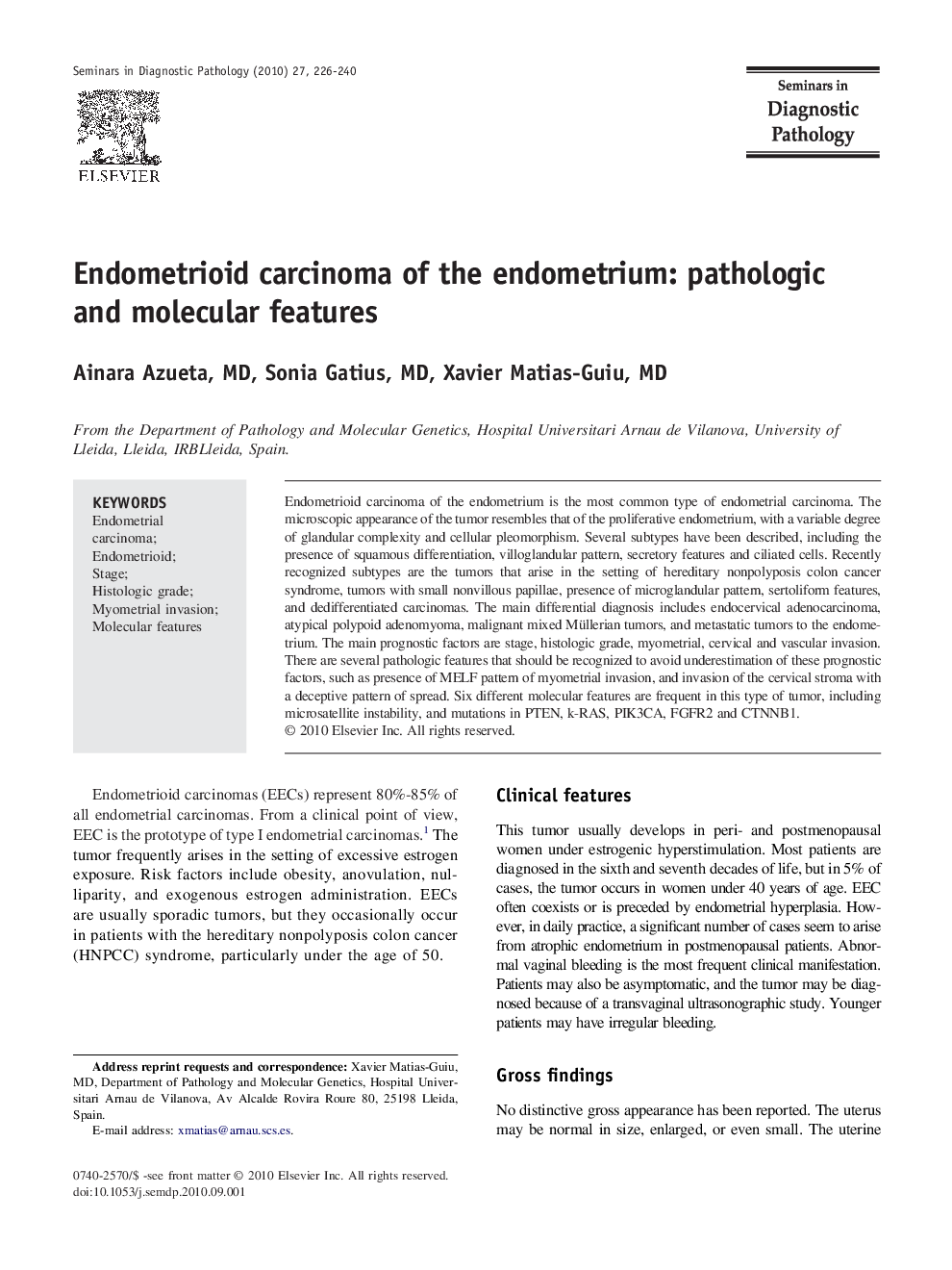| Article ID | Journal | Published Year | Pages | File Type |
|---|---|---|---|---|
| 4138493 | Seminars in Diagnostic Pathology | 2010 | 15 Pages |
Abstract
Endometrioid carcinoma of the endometrium is the most common type of endometrial carcinoma. The microscopic appearance of the tumor resembles that of the proliferative endometrium, with a variable degree of glandular complexity and cellular pleomorphism. Several subtypes have been described, including the presence of squamous differentiation, villoglandular pattern, secretory features and ciliated cells. Recently recognized subtypes are the tumors that arise in the setting of hereditary nonpolyposis colon cancer syndrome, tumors with small nonvillous papillae, presence of microglandular pattern, sertoliform features, and dedifferentiated carcinomas. The main differential diagnosis includes endocervical adenocarcinoma, atypical polypoid adenomyoma, malignant mixed Müllerian tumors, and metastatic tumors to the endometrium. The main prognostic factors are stage, histologic grade, myometrial, cervical and vascular invasion. There are several pathologic features that should be recognized to avoid underestimation of these prognostic factors, such as presence of MELF pattern of myometrial invasion, and invasion of the cervical stroma with a deceptive pattern of spread. Six different molecular features are frequent in this type of tumor, including microsatellite instability, and mutations in PTEN, k-RAS, PIK3CA, FGFR2 and CTNNB1.
Keywords
Related Topics
Health Sciences
Medicine and Dentistry
Pathology and Medical Technology
Authors
Ainara MD, Sonia MD, Xavier MD,
